
|   |

|   |
Exploring the methodology of teaching dance and its implementation Photos: Avinash Pasricha, Ganesh Sahoo, Srjan Archive, Akash Bhattacharya November 10, 2024 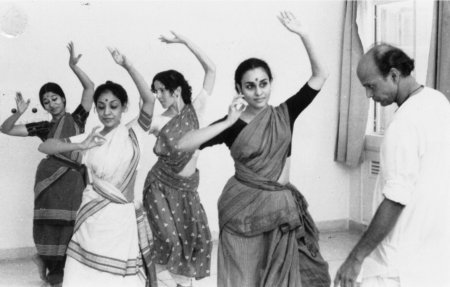

Introduction Dance, as an expressive art form, has been an integral part of human culture for centuries. From ancient rituals to contemporary performances, dance has served as a medium for storytelling, spiritual expression, social interaction, and personal fulfilment. The teaching of dance, however, is a complex process that goes beyond mere choreography. It involves imparting knowledge of technique, fostering creativity, and nurturing the physical and emotional well-being of the student. The methodology of teaching dance has evolved over time, influenced by cultural shifts, advancements in pedagogy, and the growing recognition of dance as both an art form and an academic discipline (Hanna 5). The history of dance education can be traced back to ancient civilizations where dance was taught as part of religious ceremonies and social rites. In India, for instance, the teaching of classical dance forms such as Bharatanatyam and Odissi was traditionally passed down through the Guru-Shishya parampara, a mentor-disciple relationship (Vatsyayan 23). In the West, the formalization of dance education began in the Renaissance period, with the establishment of dance academies and the codification of ballet techniques (Cohen 47). In the modern era, dance education has expanded to include various styles and forms, from classical to contemporary, and from cultural to commercial. This diversification has led to the development of new teaching methodologies that cater to different learning styles, age groups, and objectives (Risner and Anderson 112). The implementation of these methodologies, however, varies widely depending on factors such as cultural context, institutional framework, and the individual teacher's philosophy (Smith-Autard 88). 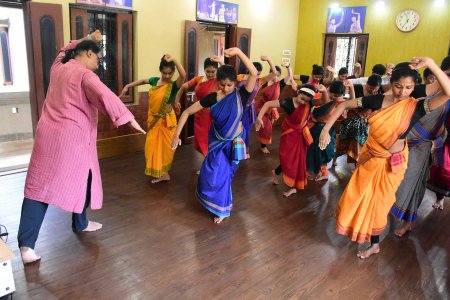
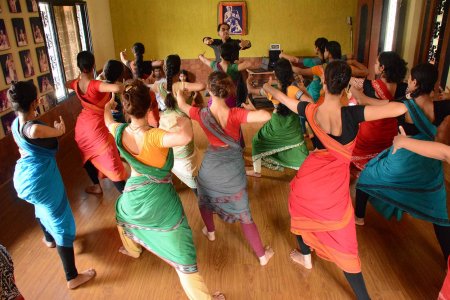
Research Problem Despite the rich history and diversity of dance education, there is still a lack of standardized methodology for teaching dance. Different teachers and institutions often adopt different approaches, leading to inconsistencies in the quality of dance education (Kassing 64). Furthermore, the implementation of dance teaching methodologies is often influenced by external factors such as cultural norms, economic conditions, and technological advancements (Carter and O'Shea 14). This study aims to explore the various methodologies of teaching dance and examine how they are implemented in different contexts. Objectives of the Study The primary objectives of this study are as follows:
Hypothesis This study is based on the hypothesis that the methodology of teaching dance significantly influences the learning outcomes of students. It is also hypothesized that the implementation of dance teaching methodologies is affected by various external factors, including cultural context, institutional framework, and technological advancements (Kassing 64). Relevance of the Study This study is relevant for several reasons. First, it contributes to the growing body of research on dance education by providing a comprehensive analysis of teaching methodologies (Carter and O'Shea 14). Second, it offers insights into the challenges faced by dance educators and provides recommendations for improving the quality of dance education (Hanna 7). Third, it highlights the importance of cultural context in the implementation of dance teaching methodologies, which is particularly relevant in today's globalized world where dance is taught and practiced across different cultures (Vatsyayan 23). 
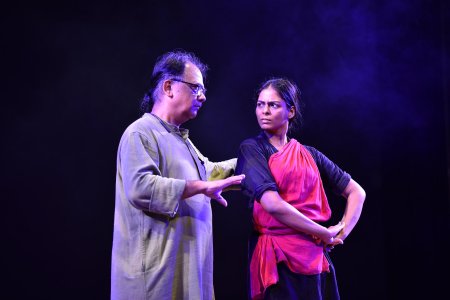
Research Methodology The methodology for this study is based on a qualitative research approach. Data was collected through a combination of literature review, case studies, and interviews with dance educators (Cohen 47). The literature review focused on academic articles, books, and reports on dance education and pedagogy (Smith-Autard 94). The case studies examined different dance institutions and programs to analyse their teaching methodologies and implementation practices (Risner and Anderson 115). Interviews were conducted with dance educators from various backgrounds to gain insights into their teaching experiences and challenges (Minton 6). The data collected was analysed using thematic analysis, which involved identifying recurring themes and patterns in the data (Kassing 68). The findings were then compared and contrasted with existing literature to draw conclusions and make recommendations (Humphrey 25). Results The results of this study reveal a wide range of methodologies used in teaching dance. These methodologies can be broadly categorized into three types: technique-based, creative-based, and holistic-based methodologies (Fraleigh 9). 1. Technique-based Methodology The technique-based methodology focuses on the development of technical skills in dance. This approach is commonly used in classical dance forms such as ballet, Odissi, Bharatanatyam, and Kathak, where precision and mastery of specific movements are emphasized (Vatsyayan 30). The teaching process often involves repetitive practice, correction of posture, and the use of mirrors to provide visual feedback (Kassing 72). In this methodology, the teacher plays a central role in demonstrating the movements and guiding the students (Smith-Autard 97). 2. Creative-based Methodology The creative-based methodology emphasizes creativity and self-expression in dance. This approach is often used in contemporary dance forms and improvisation-based practices (Humphrey 28). Instead of focusing on specific techniques, the teacher encourages students to explore their own movements and express their emotions through dance (Fraleigh 13). The teaching process may involve improvisation exercises, group collaborations, and the use of stimuli such as music, poetry, or visual art to inspire movement (Minton 9). 3. Holistic-based Methodology The holistic-based methodology takes a comprehensive approach to dance education, integrating technical skills, creativity, and physical and emotional well-being (Cohen 52). This approach recognizes that dance is not just about mastering movements but also about developing a deep connection between the body, mind, and spirit (Hanna 10). The teaching process may involve a combination of technique training, creative exploration, and mindfulness practices such as meditation and yoga (Vatsyayan 35). The implementation of these methodologies varies widely depending on the cultural context and institutional framework (Carter and O'Shea 19). For example, in traditional Indian dance schools, the Guru-Shishya parampara still plays a significant role in shaping the teaching methodology, with an emphasis on discipline, respect for the teacher, and the transmission of cultural values (Vatsyayan 40). In contrast, contemporary dance programs in Western institutions may adopt a more student-centered approach, encouraging individual exploration and creativity (Risner and Anderson 120). Discussions The findings of this study highlight several key issues related to the methodology of teaching dance and its implementation. 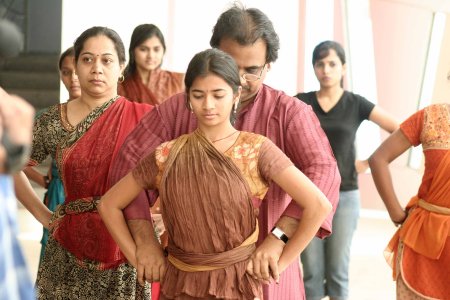
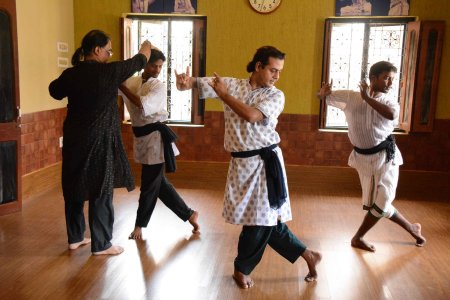
1. The Role of the Teacher The teacher plays a crucial role in the methodology of teaching dance. Whether the approach is technique-based, creative-based, or holistic-based, the teacher's philosophy, experience, and teaching style significantly influence the learning outcomes of students (Smith-Autard 101). Teachers who adopt a flexible approach, adapting their methodology to the needs and abilities of individual students, tend to achieve better results (Risner and Anderson 125). However, the challenge lies in finding the right balance between guiding the students and allowing them the freedom to explore their own creativity (Minton 11). 2. The Influence of Cultural Context Cultural context plays a significant role in the implementation of dance teaching methodologies. In traditional dance forms, the teaching methodology is often deeply rooted in cultural practices and values (Vatsyayan 42). For example, in Indian classical dance, the teaching process is not just about imparting technical skills but also about transmitting cultural heritage and spiritual knowledge (Kothari 37). In contrast, contemporary dance forms may prioritize innovation and individuality, reflecting the values of modern society (Fraleigh 15). The challenge for dance educators is to navigate these cultural differences and find ways to integrate traditional and contemporary approaches in their teaching (Carter and O'Shea 21). 3. The Impact of Technological Advancements Technological advancements have had a significant impact on the methodology of teaching dance. The use of video recordings, online tutorials, and virtual classes has made dance education more accessible and flexible (Minton 13). However, it has also raised concerns about the loss of personal interaction and the diminishing role of the teacher in the learning process (Kassing 75). While technology can enhance the teaching methodology, it should not replace the human element, which is essential for the holistic development of the student (Smith-Autard 104). 4. The Importance of a Holistic Approach The study highlights the importance of adopting a holistic approach to dance education. While technical skills are important, they should not be the sole focus of the teaching methodology (Hanna 12). Dance is an art form that involves the whole person - body, mind, and spirit (Fraleigh 17). A holistic approach that integrates technique, creativity, and well-being can lead to a more fulfilling and meaningful learning experience for students (Risner and Anderson 128). This approach also helps to address the physical and emotional challenges that students may face in their dance training (Kassing 77). 5. The Challenges of Implementation The implementation of dance teaching methodologies is not without challenges. Teachers often face difficulties in managing large classes, dealing with diverse student abilities, and balancing the demands of technique and creativity (Humphrey 30). In addition, external factors such as limited resources, lack of institutional support, and cultural biases can hinder the effective implementation of teaching methodologies (Carter and O'Shea 23). The study suggests that providing teachers with adequate training, resources, and support is crucial for improving the quality of dance education (Minton 16). 
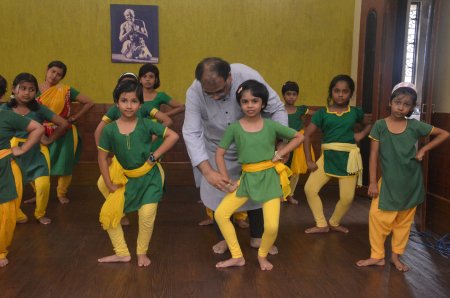
Conclusion The methodology of teaching dance is a complex and multifaceted process that requires careful consideration of various factors, including the teacher's role, cultural context, technological advancements, and the need for a holistic approach. While there is no one-size-fits-all methodology, the study suggests that a flexible, student-centered approach that integrates technique, creativity, and well-being is likely to yield the best results (Smith-Autard 108). The study also highlights the need for ongoing research and innovation in dance education to address the challenges of implementation and ensure that dance continues to thrive as an art form and an academic discipline (Kassing 80). Works Cited 1) Carter, Alexandra, and Janet O'Shea, editors. *The Routledge Dance Studies Reader*. 2nd ed., Routledge, 2010. 2) Cohen, Selma Jeanne. *Next Week, Swan Lake: Reflections on Dance and Dances*. Wesleyan University Press, 1982. 3) Fraleigh, Sondra Horton. *Dance and the Lived Body: A Descriptive Aesthetics*. University of Pittsburgh Press, 1987. 4) Hanna, Judith Lynne. *Dancing to Learn: The Brain's Cognition, Emotion, and Movement*. Rowman & Littlefield, 2015. 5) Humphrey, Doris. *The Art of Making Dances*. Princeton Book Company, 1959. 6) Kassing, Gayle. *History of Dance: An Interactive Arts Approach*. 2nd ed., Human Kinetics, 2014. 7) Kothari, Sunil. *Classical Indian Dance in Literature and the Arts*. Sangeet Natak Akademi, 1996. 8) Minton, Sandra Cerny. *Choreography: A Basic Approach Using Improvisation*. Human Kinetics, 2007. 9) Risner, Doug, and Mary Elizabeth Anderson. *Dance, Professional Practice, and the Workplace*. Routledge, 2014. 10) Smith-Autard, Jacqueline. *Dance Composition: A Practical Guide to Creative Success in Dance Making*. 6th ed., Methuen Drama, 2010. 11) Vatsyayan, Kapila. *Classical Indian Dance in Literature and the Arts*. Sangeet Natak Akademi, 1996. 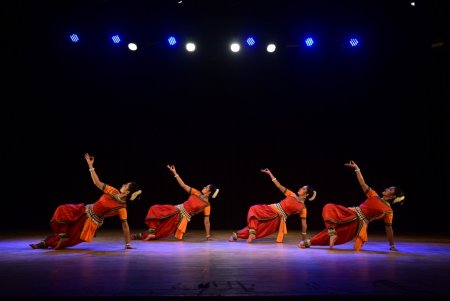

 Ratikant Mohapatra, as Director of Srjan and Dean of the Faculty of Arts, Communication, and Indic Studies at Sri Sri University, stands as a distinguished figure in Indian classical dance. With a career spanning over 40 years, his artistry as a dancer, choreographer, and educator has profoundly shaped Odissi's journey. Under his guidance, Srjan has earned national and global acclaim, merging neo-classical innovation with traditional grace. Honoured with the Central and State Sangeet Natak Akademi Awards and a Guinness World Record for orchestrating 555 Odissi dancers, his legacy reflects a steadfast dedication to the evolution and timeless beauty of Odissi. Post your comments Please provide your name and email id along with your comment. All appropriate comments posted with name and email id in the blog will also be featured in the site. |